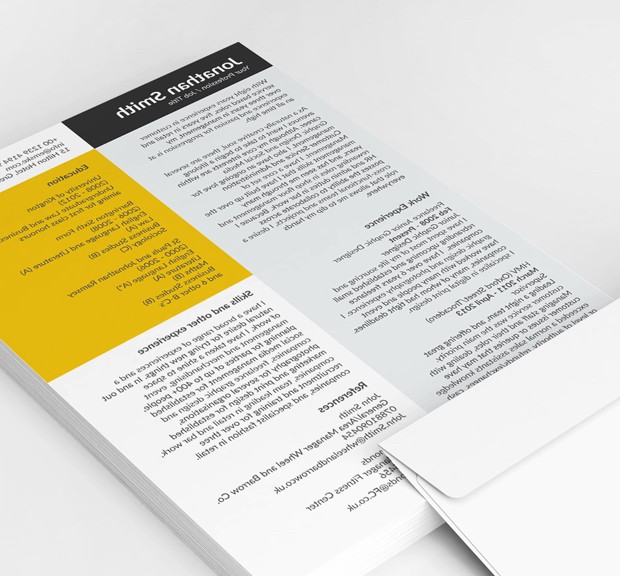This is the third in a series of articles on Hiring Engineers by Jocelyn Goldfein, Angel, Advisor. Formerly: Engineer @ Facebook, VMware, Startups, Trilogy.
By Jocelyn Goldfein, Angel and Advisor
Whether you’re embarking on the first engineering hires for your startup, or trying to double the size of your team at a post-series C rocket ship, it pays to learn to spot diamonds in the rough.
When you’re hiring generalists and not a particular specialty, a pedigree is the first thing most people look for. A CS degree from a top school, jobs with name-brand employers… it’s a no-brainer to interview those candidates (if you think you stand a chance of closing them.)
There’s nothing wrong with interviewing people with a great pedigree, but great managers and great recruiters don’t stop there.
Remember that the utility of looking at pedigree stems mainly fromcorrelation, not causation. A pedigree says this person has already been selected by an institution with high standards. In other words, a Stanford student stands a good chance of turning out to be a strong engineer because Stanford’s admissions department does a good job finding talented and hard working high school students.
I’m not going to embarrass anyone by naming names, but I’ve worked with incredibly talented engineers in every discipline from embedded systems to AI to UX. Many of them had a pedigree within the first 4–5 years of their career… and many of them did not. I’d venture to say it was close to 50/50.It’s an incredible competitive advantage to be able to spot the talent that doesn’t come with a pedigree.
Non-pedigree talent doesn’t have every valley employer knocking on their door. Non-pedigree talent may be scrappier about operating without the comforts, infrastructure, or scale of a big employer. And non-pedigree by definition means you get more breadth of background, more hybrid vigor, and often more creativity and resilience. You can’t spot those on a resume — but you can spot some leading indicators and give yourself a chance to find them in a screening interview.
It’s an incredible competitive advantage to be able to spot the talent that doesn’t come with a pedigree.
I estimate that I’ve read north of 10,000 software engineer resumes in my life, and over time I’ve evolved a strategy to scout potential. This might sound crazy, but bear with me: when I read a resume, I start with the working hypothesis that I’m looking at someone who is smart, talented, hard-working, and determined. Then I look at what they did with the opportunities available to them to prove or disprove that theory.
Start at the beginning (which is to say, the end of the resume): education. Getting into a top-tier school is luck of the draw, especially in the last five years. Geography and economic circumstances send great students to local schools without national reputations. Some brilliant high schoolers with distractions (like their own business or OSS projects) get lousy grades or don’t go to college at all. Do you see evidence to support any of those narratives? Did they go to the best school available in their region? Did they stand out from their classmates — win scholarships or do research with a prof or run a business on the side? Did an immigrant from another country come to a non-pedigree Masters program in the US?
Move forward in time to the internships and first job. The pedigree employers are recruiting at the pedigree schools; our diamond in the rough probably only has access to her local employers. Scoring an internship or first job working at a software company, even one you don’t recognize, is beating the odds and shows hustle. Her CS classmates are probably taking jobs with non-software firms, working in IT or support.
What happens next? School and first job are largely a function of opportunity. Within a few years, if someone has the potential I’m looking for, I’d expect to start seeing separation from his peers. Does he tackle larger and more central portions of the projects he’s doing? Rise to tech lead or project lead in a small company? Does she make the jump to better known companies, or change projects to work with the most modern technology? If he started in QA, has he crossed over to software engineering? If she started in a satellite office, did she move to HQ?
Those are tough transitions to make, and accomplishing one or more of them is strongly suggestive of the kind of chutzpah that makes for great startup employees.
Keep reading forward, interrogating each major career inflection point (promotion, new project, location change, job change) and ask yourself what a talented, ambitious, person might do with the set of choices at hand. You are looking for an arc that keeps curving up and to the right from where they started, and the tougher the starting point, the steeper the slope of the climb, the more impressed you should be.
Most resumes will actually tend to disprove the hypothesis. It’s hard to get excited about a story that continues for years going kind of… sideways. If an engineer is more talented than most of his peers, I expect to see him rise to greater technical challenges and ownership. It’s possible she’s at a dysfunctional company that doesn’t reward merit, but I hope someone ambitious would take steps to change her circumstances by changing teams, jobs, or location. Then it’s a calculated gamble that she’s ready to take the next step into the big leagues (working for you!)
One of the hardest signals to read is a string of failed startups and short stints. Someone talented and ambitious might absolutely bias towards joining startups as opposed to slower moving established firms in his region, or moving on quickly from a company that doesn’t have great opportunities. Most startups fail, and it could just be bad luck to have a string of those. So while it doesn’t comprise evidence of failure, there is no real evidence of success to bet on, either.
When you’re done reading backwards through the job history section, you’ll have built a picture of this person’s opportunities and choices in your mind. As you finish up with the start of the resume (hopefully a few words in the person’s own voice), see if it confirms or confounds your narrative.
At this point, you need to make a decision, and I will remind you that it’s not a hiring decision. You just need to decide if it’s worth spending a bit more time to evaluate them, get them on the phone, and figure out if the life story you imagined for them bears any resemblance to reality (and if they can code their way out of a paper bag.) It may be long odds, but the worst case isn’t bad (a small amount of time spent) and in the best case you find someone with the determination to run through walls and the talent to succeed at it.
Addenda
#1 — In addition to talent scouting unrealized potential, reading backwards is also a great way to prepare for an effective interview. Why did that MIT grad take that first job out of college? What happened to make him go from a startup to a BigCo? You learn a lot about someone’s motivation and values system from their major inflection points. Obviously you would not draw any conclusions from the resume alone, but you can come up with a great list of questions.
#2 — A few folks on twitter wondered if this is a silver bullet for (gender and ethnic) diversity hiring. It’s really not. Reading resumes backwards will help you hire more people and more scrappy people with different kinds of work backgrounds. But the non-pedigree candidate pool has about the same gender/ethnic mix as the rest of tech. Percentages are a little better on underrepresented ethnicities, but it’s still tiny numbers. If you want gender and ethnic diversity in your hiring, you will have to make it an explicit goal and work really hard at it — you are not going to get it for free.
- Step 0: What to Look For
- Step 1: Sourcing
- Step 2: Filtering (this post!)
- Step 3: Screening
- Step 4: Assessing & Deciding
- Step 5: Closing
- Possible sidebars: hiring bar, diversity, metrics & tools, recruiter/hiring manager teamwork
About the guest blogger Jocelyn Goldfein: Jocelyn invests money and time in making high tech startups successful. She gets to work with teams and products she believes in, every day. She’s spent her career building software during high-growth years at VMware and Facebook (and a couple startups). Her and her teams have built middleware, distributed systems, big data powered ranking systems, operating systems, web and mobile apps and developer tools. Learn more about her investing activities on AngelList.

